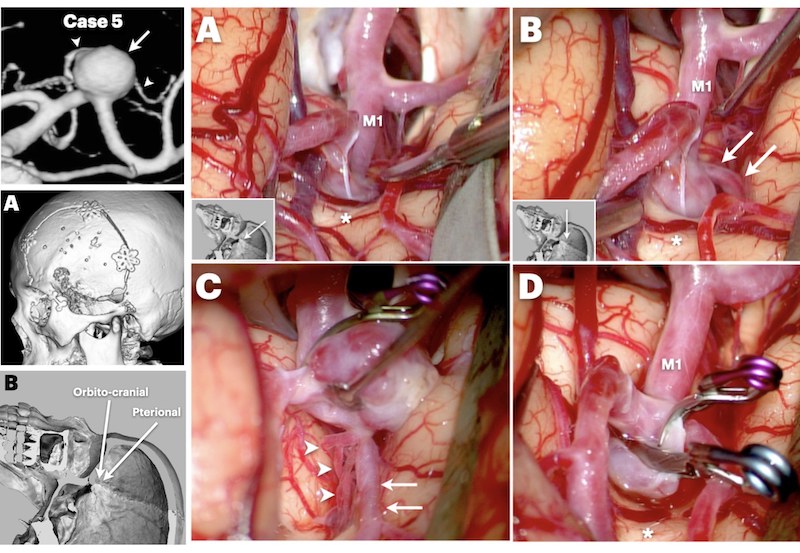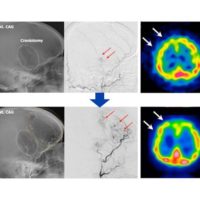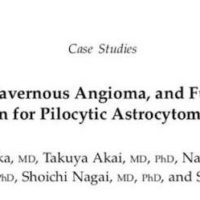
Short M1あるいはearly frontal branch (EFB)分岐部から発生した脳動脈瘤に対する手術では、通常のtrans-Sylvian approachでは時として動脈瘤の露出やクリッピングに難渋することがあります。今回、当科の堀 恵美子先生から、このような動脈瘤に対してorbito-cranial (or orbito-pterional) approachがきわめて有効であることを報告させていただきました。従来、このアプローチは前交通動脈瘤に対する手術の変法として用いられてきましたが、前有孔質に陥入するような、大きめのShort M1あるいはearly frontal branch (EFB)分岐部から発生した脳動脈瘤に対しても、明るく、広く、全体像を捉えやすい本アプローチはきわめて有効です。
A Voyage to Depth of Neuroscience Vol. 87
When operating on cerebral aneurysms arising from the short M1 or early frontal branch (EFB) bifurcation, the usual trans-sylvian approach is sometimes insufficient to expose the aneurysm and clipping may be challenging.
Dr. Emiko Hori of our department reported that the orbito-cranial (or orbito-pterional) approach is extremely effective for such aneurysms. This approach has conventionally been used as a modified surgical approach for anterior commissural aneurysms, but it is also extremely effective for large aneurysms arising from the short M1 or early frontal branch (EFB) bifurcation, which involves the anterior perforated substance, as it provides a brighter, wider, and more complete view of the aneurysm.
Hori E, Kashiwazaki D, Kuroda S.
Usefulness of Orbito-cranial Approach in Neck Clipping of Aneurysms Arising from Middle Cerebral Artery Proximal to The Limen Insulae: A Case Series
World Neurosurg. 2022 Sep 24:S1878-8750(22)01364-X. doi: 10.1016/j.wneu.2022.09.088. Online ahead of print.
PMID: 36167301
Abstract
Background: Neck clipping of the aneurysms arising from the middle cerebral artery (MCA) proximal to the limen insulae is often difficult because of the difficulties to secure a bright and wide operative field to observe the aneurysms and the surrounding structures such as the anterior perforated substance, lenticulostriate arteries (LSAs), and early frontal branch.
Objective: To determine the usefulness of the orbito-cranial approach in neck clipping of the aneurysms arising from the MCA proximal to the limen insulae.
Methods: This prospective study included seven patients who underwent neck clipping of aneurysms arising from the MCA proximal to the limen insulae through the orbito-cranial approach. In addition to conventional pterional craniotomy, the superiolateral orbital rim was resected with a one-piece fashion. Its procedures, complications, and outcomes were reviewed.
Results: Removal of the superolateral orbital rim facilitated a bright and wide observation from the skull base side. It was much easier to identify the anterior perforated substance, LSAs, and early frontal branch around the aneurysm through orbito-cranial approach than through conventional pterional approach. Neck clipping could be performed completely and safely in all cases.
Conclusion: Orbito-cranial approach to the aneurysms arising from the MCA proximal to the limen insulae provides us a bright and wide operative field compared with conventional pterional approach, which is useful to secure complete and safe neck clipping by avoiding cerebral contusion and unexpected obstruction of the early frontal branch.









